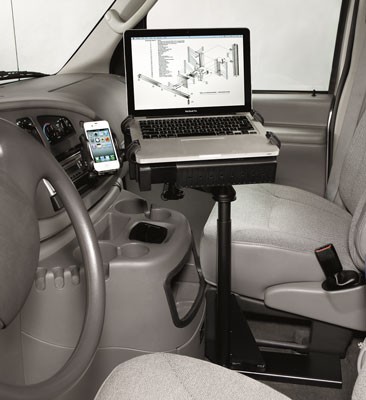Five things that new laptop buyers and new car buyers have in common

At a glance, A MacBook, a Windows laptop, and a Buick have very little in common. With that said, when the times comes to buy a new set of wheels, or a new PC, shoppers are often faced with similar questions, particularly focused on the actual value of the computer, or vehicle they are looking for.
How fast is it, and what kind of mileage can i expect?
Depending on the type of shopper you are, speed may, or may not be particularly relevant, in respect to battery life. If shopping, web browsing, social media, and streaming shows on Netflix is anywhere near a close representation of what you expect to do on your new laptop, there are cost-effective options that are perfect for most users, with nearly all-day-long battery life, depending on usage, such as the MSI C Series CX62. This simple laptop costs a little over $700, and is powered by an 3.2GHz Intel Core i5 CPU, with 8GB of DDR3 RAM, and 1TB HDD, which can be upgraded to a range of SSDs.
On the other hand, if you are the kind of shopper who likes performance, the sky's the limit. In reference to performance, the hybrid laptop, or 2-in-1, is a popular choice for shoppers looking for a cross-over, “all-terrain” options to the traditional laptop paradigm. These devices offer a touchscreen, a stylus, as well as a full-size keyboard, with similar capabilities as regular laptops, and the same desktop version of Windows 10. The battery life may vary, but it’s generally longer-lasting than bigger, more powerful full-size laptops. 2-in-1s may look modest, but they offer a lot in terms of performance and processing power, even if they may be a little harder to upgrade, which is why it’s good advice to think carefully about what specs to choose before ordering one.
For instance, Microsoft and VAIO offer similar products, in the realm of hybrid laptop PCs. The Surface Pro 4 is definitely an attractive option, as these devices are built specifically to take full advantage of all the features built into Windows 10, in a similar way as Apple did with MacBooks, within the Mac OS X ecosystem. With that said, VAIO is becoming a popular alternative to Surface, with rather impressive specs, and similar screen sizes and multi-touch capabilities.
Shoppers who really want to keep the pedal to the metal, and push the limits, such as gamers, generic power users, or creative business users, have also plenty to choose from. However there is a price to pay, in reference to a much shorter battery life. Laptops like these, like the ASUS ROG Series, or the MSI Workstation Series, are commonly known as “desktop replacements”, because of their sheer power, and the fact that are usually desk-bound.
Most of these PCs come with 16GB of RAM, 1TB HDD (upgradeable to SSD), and advanced graphic capabilities provided by NVIDIA hardware, typically in the realm of Geforce GTX 980 and newer, with a starting configuration of 4GB of video RAM.
Is it big enough?
Capacity, much like speed, is a relative issue, dependent on the requirements and expectation of the user. For those expecting to save lots of pictures and videos, or install a hefty gaming, and music library, as well as plenty of software, storage options should be factored in with a higher priority. Also, it’s important to remember that if a consumer is planning to store lots of data onto a local drive, beyond the capabilities of a cloud drive like iCloud, OneDrive, or Google Drive, the local drive should be not only big enough, but reliable as well. In this sense, investing in an SSD can be a life-saver, should an HDD fail. HDDs are a lot more susceptible to damage than SSDs, due to the fact that they have moving parts, more so in laptop PCs that get carried around a lot.
How long will it run?
This is the million dollar question. Up until four-five years ago, the typical lifespan of a laptop was approximately 4-6 years. In many cases, the reason for a laptop to die was merely the wear and tear of internal components, as well as the leakage of batteries, and other similar issues. Now, laptops are much different. Many new laptops are extremely thin and fanless, using low-power component, which reduces heat, and wear on the internal components. By this token, modern laptops last much longer than older ones, optimistically in the range of 8-10 years.
Is it safe enough for the family to use?
Modern laptops are as safe as their operating system. Whether you are a Mac user or a Windows 10 PC user, both environments offer solid security and encryption options that keep the data relatively safe, compared to older PCs running older versions of Windows. NEw laptops also offer hardware-based security features, such as the ability to store passwords and login information in the CPU, instead of the hard drive, which makes it a lot harder for malware to reach.
How often will it need servicing?
Unlike cars, laptops don’t need oil changes, tire rotation or smog checks, but sometimes a hard drive or a memory module may go bad, although it’s rare, and typically it’s a problem with the manufacturer, who will be more than happy to replace the device, or service it, within the scope of the warranty. Most manufacturer warranties can range between 6 months and 1 year, or even two years, in some cases. With that said, it does pay off to invest in extended warranty, which, in some cases, can cover different types of servicing for a much longer period of time than what the manufacturer offers.